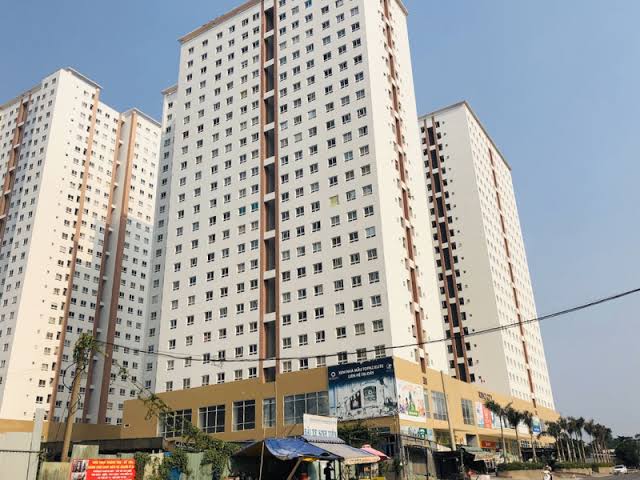As supply remains constrained in the core of HCM City, causing housing prices to continue rising, experts predict that its neighbouring provinces are emerging as a more viable alternative, especially for end-users.
A report from CBRE stated that in the third quarter of 2025, the residential market in HCM City, excluding areas like Bình Dương and Bà Rịa – Vũng Tàu, saw 2,549 newly launched condominiums and 220 landed properties. Most of the supply came from subsequent phases of existing projects, with only one low-rise project called Sei Harmony in Bình Tân being introduced to the market for the first time.
For the condominium market in old HCM City, all new supply came either from subsequent phases of previously launched projects or from projects restarting after a long suspension.
In the third quarter of 2025 alone, new supply was nearly double that of the first half, representing a 143 per cent increase quarter on quarter and 19 times higher than the same period last year, with 75 per cent of new supply concentrated in the eastern part of the city.
The market achieved 2,250 units sold, an increase of 63 per cent quarter-on-quarter, however, based on the newly launched supply, the absorption rate was only 68 per cent, down from 90 per cent in the previous quarter. Rapid price increases have made buyers more cautious before making decisions, even though demand remains strong, especially from end-users.
Contrary to the condominium market, old HCM City’s landed property market showed signs of mild recovery in Q3 2025, after a prolonged period of stagnation, supported by positive signals from new supply and absorption rates.
Alternative escape
Lâm Văn Tôn from Tân Mỹ Ward of HCM City said that his family is looking to buy an apartment in the inner city, but the prices are rising rapidly. After surveying the outskirts of the city, they decided to choose an apartment in Dĩ An.
“The price is only 60 per cent compared to former Thủ Đức, but with excellent connectivity infrastructure. It's still convenient to go to work and more cost-effective,” he said.
Experts said that due to low supply and high prices, the market is witnessing a trend in which end-users move to neighbouring provinces.

An apartment building in HCM City. The residential market in HCM City, excluding areas like Bình Dương and Bà Rịa-Vũng Tàu, saw 2,549 newly launched condominiums and 220 landed properties in the third quarter of this year. — Photo from onehousing.vn
CBRE forecasts that by the end of this year, the old HCM City residential market is projected to see the launch of an additional 4,300 high-rise and 750 low-rise units.
Including the former Bình Dương and Bà Rịa-Vũng Tàu, total new supply in 2025 is expected to reach a significant scale, about 2,400 landed properties and over 22,000 condominiums, highlighting the increasing role of the extended HCM City region in addressing residential needs.
Commenting on the overall residential market, Dung Dương, executive director of CBRE Vietnam, stated: “Despite signs of supply improving in HCM City during the third quarter, the market remains tight relative to actual demand, which is fueling sustained upward price pressure across both primary and secondary segments. The market will continue to be driven by two key trends: the clearance of legal bottlenecks and the sustained shift toward suburban areas."
According to Dương, regulatory efforts to resolve legal issues have significantly impacted the market, having already cleared the way for 86 projects in HCM City as of July 2025. This represents the driving force for new supply expected in the near term in the fourth quarter of this year and 2026.
Concurrently, the expanded HCM City regions, including Bình Dương and Long An, are registering more abundant supply. Crucially, the average primary price in these regions is only 30 per cent of low-rise prices and 50 per cent of high-rise prices found in HCM City's core. This significant price disparity, coupled with accelerating inter-regional infrastructure development and greater land availability, is establishing these areas as a highly viable alternative for homebuyers.
This applies especially to young customers and families seeking more spacious living at an accessible price point, which explains the shift of investment capital away from the HCM City core and towards development opportunities in these satellite cities, Dương said.
A report from JLL forecasts that in 2025, the market is expected to see an estimated supply of around 5,000 – 5,500 high-end apartment units and 1,300 landed properties.
Infrastructure projects such as the An Phú interchange and Ring Road 3 are slated for significant deployment and are anticipated to be driving forces for the market this year.
Additionally, the HCM City People's Committee is considering resolving legal complications for key projects, and this is expected to help the market flourish more in the final quarter of 2025.
Amid Việt Nam's restructuring of administrative boundaries of localities, investors and homebuyers in HCM City are likely to go through a temporary cautious phase, awaiting more certainty in management policies, land planning, and public investment in the upcoming period to make investment decisions.
Meanwhile, satellite areas like old Bình Dương and Bà Rịa-Vũng Tàu are expected to receive increased attention, with strong investments in transportation infrastructure and public facilities to connect and develop the economy of the region after merging with HCM City. — VNS
Read original article here